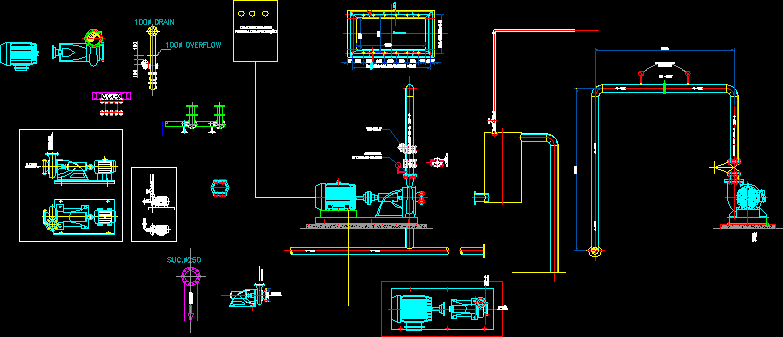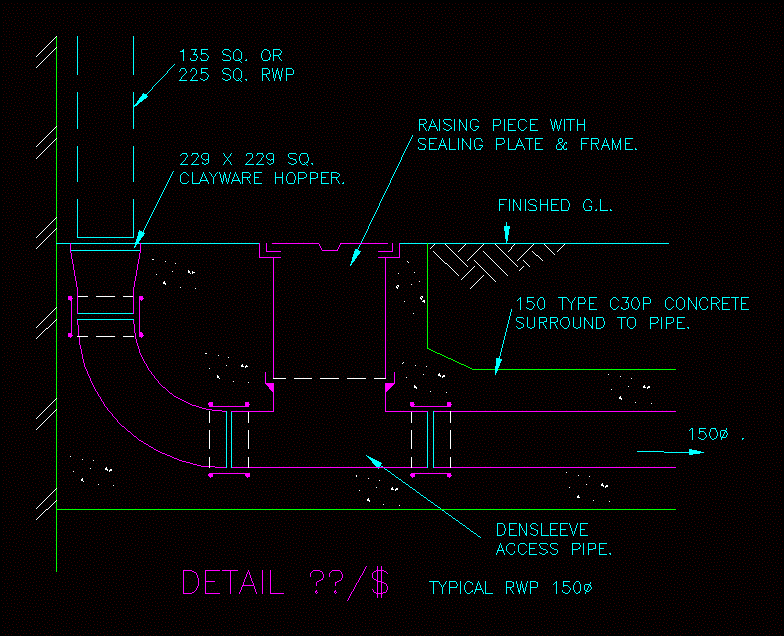Basic Mechanical Engineering Pdf
You can expect to find all of the following types of question in a typical mechanical aptitude test. Mechanical Reasoning - Designed to assess your knowledge of physical and mechanical principles. For example, pulleys, levers, simple electrical circuits etc. Mechanical reasoning tests are used to select for a wide range of technical occupations. Basic Mechanical Engineering PART 1 PART 2 PART 3 Strength of Materials PART 1 Theory of Machines PART 1 Machine Design PART 1 Fluid Mechanics PART 1 PART 2 & 3 Heat Transfer PART 1 Thermodynamics PART 1 PART 2 Engineering Mechanics PART 1 Hydraulic Machines PART 1 Nuclear Power Plants PART 1 I.C. Engines PART 1 Fluid Mechanics PART 1 Compressors, Gas Turbines and Jet Engines PART 1 Steam. Mechanical Engineers Hand Book will be useful not only to senior executives interested in knowing mechanical engineering subject but also beneficial to all the readers. The author expresses his gratefulness to all those author’s, publishers, and manufacturers. This book is an attempt to satisfy the.
Here is Mechanical Engineering basic concepts pdf. Which can help you for quick revision before any competitive exam and in your free time.
It is pertinent to mention here that it is not easy for all engineers to remember all basic concepts of mechanical engineering because over time, our memory fades away and we can only remember those things which are continuously in use in our daily routine life/ job activities. As a mechanical engineering student it is must to know about Mechanical Engineering basic concepts which can helpful in interviews or anywhere. So this PDF book is specially design to quickly revise the Mechanical Engineering basic concepts.
It is advisable for all mechanical engineers to keep on revising these concepts. It will help them improve work efficiency and performance in interviews for better jobs. When you are a mechanical engineer, everyone expects you to give answers accurately to some of the basic questions about mechanical engineering concepts. After a few years of graduation, mechanical engineers even forget what entropy and enthalpy is.
So plese find the attachment for the same below cricut download plugin for mac
Engineering Mechanics:
Engineering Mechanics – Introduction
Force – Basic Definition
Resultant Force
System of Forces
Lami’s Theorem
Moment of a Force
Varignon’s Principle of Moments
Parallel Forces
Couple – Moment of a couple
Center of Gravity
Moment of Inertia
Friction and Its types
Limiting Angle of Friction
Angle of Repose
Minimum Force Required to Slide a Body on Horizontal Plane
Effort Required to Move the Body on an Inclined Plane
Screw Jack
Lifting Machine (Lift)
Systems of Pulleys
Truss or Frame
Speed, Velocity, Acceleration, Retardation
Equations of Linear Motion
Newton’s Laws of Motion
Mass, Weight, Momentum and Inertia
D-Alembert’s Principle
Motion of a Lift or Elevator
Motion of Two Bodies Connected by a String over a pulley
Projectile Motion
Equation of the Path of a Projectile
Angular Displacement
Angular Velocity
Angular Acceleration
Simple Harmonic Motion
Velocity and Acceleration of a Particle Moving With Simple Harmonic Motion
Simple Pendulum
Closely Coiled Helical Spring
Compound Pendulum
Center of Percussion / Oscillation
Torsional Pendulum
Centripetal and Centrifugal Force
Superelevation Angle of Inclination
Elastic and Inelastic Collisions
Mechanical Work Definition Formula
Mechanical Power Definition Formula
Mechanical Energy Definition Types
Hydraulic Machines:
Hydraulic Machines – Introduction
Impact of Water Jets
Hydraulic Turbines
Impulse Turbines
Reaction Turbines
Draft Tube in Turbine
Specific Speed of turbine
Unit Speed, Unit Discharge and Unit Power
Cavitation
Centrifugal Pumps
Multistage Centrifugal Pumps
Specific Speed of Centrifugal Pump
Net Positive Suction Head (NPSH)
Model Testing and Similarity of Pumps
Reciprocating Pump
Air Vessels
Miscellaneous Hydraulic Machines
Thermodynamics:
Thermodynamics – Introduction
Thermodynamic System
Properties of a System
Thermal Equilibrium
Laws of Thermodynamics
Laws of Perfect Gases
General Gas Equation
Characteristic Equation of a Gas
Joule’s Law
Avogadro’s Law
Universal Gas Constant
Specific Heats of a Gas
Relation Between Specific Heats
Thermodynamic Processes of Perfect Gases
Constant volume (isochoric) process
Constant Pressure (Isobaric) Process
Hyperbolic process
Constant temperature/ isothermal process
Adiabatic process or isentropic process
Polytropic process
Free expansion process
Throttling process
General Laws for Expansion and Compression
Entropy
Thermodynamic Cycle
Classification of Thermodynamic Cycles
Efficiency of a Cycle
Carnot Cycle
Stirling Cycle
Ericsson Cycle
Joule Cycle
Otto Cycle
Diesel Cycle
Dual Combustion Cycle
Gas Turbines
Closed Cycle Gas Turbine
Open Cycle Gas Turbine
Thermal Efficiency of Ideal Gas Turbine
Efficiency of Gas Turbine
Fuels and Combustion
Solid Fuels
Liquid Fuels
Gaseous Fuels
Calorific Value of Fuels
Combustion of Fuels
Theoretical or Minimum Air Required for Complete Combustion
Mass of Carbon in Flue Gases
Mass of Excess Air Supplied
IC Engines:
IC Engines – Introduction
Two Stroke vs Four Stroke Engines
Sequence of Operations in IC Engine
Valve Timing Diagram of Petrol Engine
Valve Timing Diagram of Diesel Engine
Comparison of Petrol and Diesel Engines
Scavenging of IC Engines
Ignition System of Petrol Engines
Supercharging of IC Engines
Lubrication of IC Engines
Governing of IC Engines
Carburetor of an IC Engine
Spark Plug in IC Engines
Detonation or Knocking in IC Engines
Octane Number – Rating of S.I. Engine Fuels
Cetane Number – Rating of CI Engine Fuels
Testing of IC Engines
Thermodynamic Tests for I.C. Engines
Indicated mean effective pressure
Indicated power of an IC Engine
Brake power of IC Engine
Efficiency of an IC Engine
Engineering Materials:
Engineering Materials – Introduction
Pig Iron
Cast Iron
Wrought Iron
Steel
Alloy Steel
Free Cutting Steel
Stainless Steel
Structure of solids
Effect of grain size on mechanical properties
Metallography
Allotropic Forms of Pure Iron
Iron-Carbon Equilibrium Diagram
Heat Treatment
Non-ferrous metals and alloys
High temperature alloys
Metals for nuclear energy
Plastics
Industrial Engineering & Production Management:
Production Management – Introduction
Industrial Engineering – Introduction
Work Study
Symbols Used in Work Study
String Diagram
Work Measurement
Time Study
Pre-determined Motion Time System (PMTS)
Micromotion Study
Break-even Analysis
Wage Incentive Plans
Event, Activity and Critical Path
Program Evaluation Review Technique (PERT)
Critical Path Method (CPM)
Organization
Inventory Control
Plant layout
Routing, Scheduling and Dispatching
Linear programming
Hydraulics & Fluid Mechanics:
Hydraulics and Fluid Mechanics – Introduction
Important Terms Used in Hydraulics and Fluid Mechanics
Properties of Liquid
Pressure of a Liquid
Pascal’s Law
Atmospheric Pressure, Gauge Pressure and Absolute Pressure
Measurement of Pressure
Total Pressure and Centre of Pressure
Lock Gates
Buoyancy and buoyant force
Equilibrium of Floating Bodies
Metacentre and Metacentric Height
Fluid Kinematics
Rate of Discharge
Equation of Continuity
Types of Flows in a Pipe
Dynamics of Fluid
Different Types of Energies or Head of a Liquid in Motion
Bernoulli’s Equation
Euler’s Equation
Venturimeter
Orifice Meter and Pitot Tube
Momentum Equation
Orifice
Hydraulic Coefficients
Important Expressions used in Orifices and Mouthpieces
Notches and Weirs
Important Expressions used in Notches and Weirs
Pipes and Channels
Loss of Head due to Friction in Pipe
Hydraulic Gradient and Total Energy Lines
Pipes in Series or Compound Pipes
Pipes in Parallel
Syphon
Power Transmitted through the Pipe
Flow through Nozzle at the end of a Pipe
Water Hammer
Flow Through Open Channels
Most Economical Section of a Channel
Vortex Flow
Viscous Flow
Newton’s Law of Viscosity
Viscous Resistance
Compressible Flow of Fluids
Velocity of Sound Wave
Mach Number and its Importance
Stagnation Point
Flow Around Immersed Bodies
Forces Present in a Moving Liquid
Dimensionless Numbers
PART 1
PART 2
PART 3
Strength of Materials
PART 1
Theory of Machines
PART 1
Fluid Mechanics
PART 1
PART 2 & 3
Heat Transfer
PART 1

Thermodynamics
PART 1
PART 2
Engineering Mechanics
PART 1

Hydraulic Machines
PART 1
Nuclear Power Plants
PART 1
I.C. Engines
PART 1Download nedbank money app for android.
Fluid Mechanics
PART 1
Compressors, Gas Turbines and Jet Engines
PART 1
Basic Mechanical Engineering Concepts Pdf
Steam Boilers, Engines, Nozzles and Turbines
PART 1
Basic Mechanical Engineering Notes Pdf Download
NOTE-We are updating this page daily,we hope we will be upload all PDF shortly so please visit it regularly.